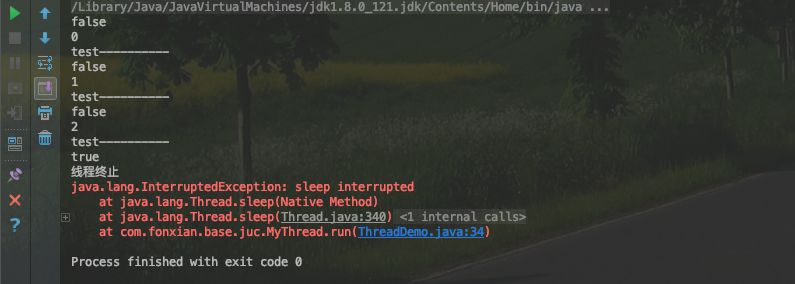Java并发编程(一) —— 线程
Java的线程机制是抢占式的,所谓的抢占式指的是每一个线程都会被分配一个指定大小的时间片,一旦这个时间片用完,就会通过上下文切换到另一个线程上去。
并发是主要是为了提高单处理器的性能。创建一个线程会有上下文切换和线程创建的消耗,那为什么要不只用串行呢?因为要考虑到阻塞这一个情况,一旦使用串行,某一项任务产生了阻塞,那么后面的任务都无法开展。
通常函数式语言能做到并发任务彼此隔离。
在线程这个层面上,系统又分为协作式系统和抢占式系统。
线程创建
继承Thread实现多线程
实现Runnable接口实现多线程
使用Callable实现多线程
使用Callable实现,相比于继承Thread类和实现Runnable接口,它的不同之处在于可以在任务结束的时候返回一个值。使用方法:
实现Runnable接口,覆写call方法。调用ExecutorService对象的submit方法,返回来的对象要放在Future中,如返回的是String,则Future
调用get即可获得线程结束时返回的值
public class ThreadTest4 {
public static void main(String[] args) {
ExecutorService exec = Executors.newCachedThreadPool();
Future<String> result = exec.submit(new MyThread());
for(int i = 0;i<1000;i++){
System.out.println("main");
}
try {
System.out.println(result.get());
} catch (InterruptedException e) {
e.printStackTrace();
} catch (ExecutionException e) {
e.printStackTrace();
}
}
}
class MyThread implements Callable<String>{
@Override
public String call() throws Exception {
for(int i = 0;i<1000;i++){
System.out.println("test");
}
return "任务完成";
}
}
start()与run()
run方法相当于一次普通的方法调用,并不会创建线程。
public class CreateThread {
static class Test implements Runnable{
@Override
public void run() {
System.out.println("test");
}
}
public static void main(String[] args) {
new Thread(new Test()).run();
}
}
执行后使用线程快照,发现只有一个main线程

如果改成start,则会成功创建线程。

线程停止
终止线程的几种方式:
- 线程正常退出,也就是run方法执行完
- 使用stop方法强行终止,不推荐
- 使用interrupt方法中断线程
interrupt 终止线程
public class ThreadDemo {
public static void main(String[] args) throws InterruptedException {
MyThread myThread = new MyThread();
myThread.start();
TimeUnit.SECONDS.sleep(5L);
myThread.interrupt();
}
}
class MyThread extends Thread {
@Override
public void run() {
super.run();
for (int i = 0; ; i++) {
System.out.println(this.isInterrupted());
if (this.isInterrupted()) {
System.out.println("线程终止");
break;
}
System.out.println(i);
try {
TimeUnit.SECONDS.sleep(2L);
} catch (InterruptedException e) {
e.printStackTrace();
this.interrupt();
}
System.out.println("test----------");
}
}
}
运行结果

线程休眠
Thread.sleep()是Thread类的一个静态方法,使当前线程休眠,进入阻塞状态(暂停执行),如果线程在睡眠状态被中断,将会抛出IterruptedException中断异常。
sleep(0)
放弃当前线程的时间片,将CPU时间片让给优先级高于或等于当前线程的其他线程。
参考文档
《Java编程思想》
关于作者
后端程序员,五年开发经验,从事互联网金融方向。技术公众号「清泉白石」。如果您在阅读文章时有什么疑问或者发现文章的错误,欢迎在公众号里给我留言。



 浙公网安备 33010602011771号
浙公网安备 33010602011771号